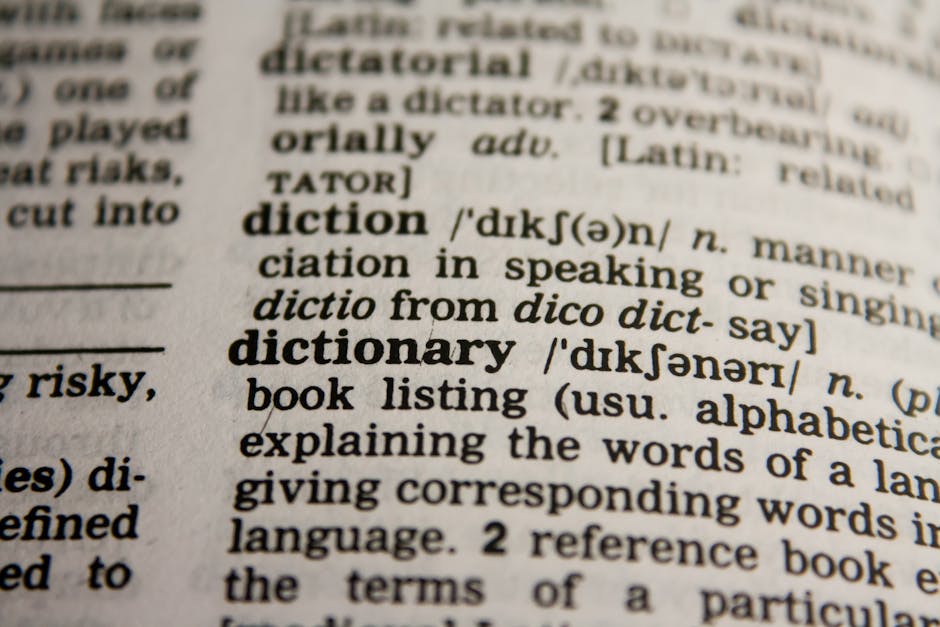What Does Che Cosa Mean in Italian? A Comprehensive Guide to Understanding This Common Phrase
The Italian phrase “che cosa” is a fundamental part of the language, frequently used to ask questions and express ideas. While seemingly simple at first glance, understanding its nuances and various applications is key to mastering Italian conversation and comprehension. This comprehensive guide will delve deep into the meaning, usage, and subtleties of “che cosa,” providing you with a robust understanding of this common phrase.
The Literal Meaning and Grammatical Structure
Literally translated, “che cosa” means “what thing.” However, this direct translation doesn’t fully capture its versatility in Italian. The word “che” acts as an interrogative pronoun, similar to “what” in English, while “cosa” translates to “thing.” Together, they form a phrase that encompasses a broader range of meanings depending on context.
Grammatically, “che cosa” functions as an interrogative phrase used to ask questions about various things. It can refer to objects, actions, ideas, or circumstances. Its usage closely resembles the English phrase “what” in various contexts. While sometimes interchangeable with “cosa,” “che cosa” adds emphasis and clarifies the question.
Common Uses and Examples of Che Cosa
Asking for Information
The most frequent use of “che cosa” is to ask for information. Consider these examples:
- Che cosa stai facendo? (What are you doing?)
- Che cosa hai comprato? (What did you buy?)
- Che cosa ti piace? (What do you like?)
- Che cosa significa questa parola? (What does this word mean?)
- Che cosa succederà? (What will happen?)
In these examples, “che cosa” directly inquires about an action, object, preference, or future event. The answer can be diverse and depends on the question’s nature.
Expressing Uncertainty or Doubt
Beyond direct questions, “che cosa” can express uncertainty or doubt. This usage is often implicit and relies on the overall context of the conversation. For example:
Non so che cosa fare. (I don’t know what to do.)
Here, “che cosa” isn’t a direct question; instead, it emphasizes the speaker’s uncertainty about the course of action.
Indirect Questions
“Che cosa” can also be used within indirect questions. This involves embedding a question within a larger sentence. Here’s an example:
Mi chiedo che cosa stia succedendo. (I wonder what is happening.)
The question “che cosa stia succedendo” (what is happening) is embedded within the larger sentence, making it an indirect question.
Variations and Synonyms
While “che cosa” is widely used, Italian offers alternative expressions with similar meanings. Understanding these variations provides a richer understanding of the language’s nuances.
Cosa: Often interchangeable with “che cosa,” particularly in informal settings. “Cosa” is a shorter, less formal version of the phrase.
Che?: A simpler and more concise interrogative pronoun, often used informally. It lacks the specific “thing” connotation of “cosa” but maintains the core meaning of “what.”
Cos’è?: A contraction of “che cosa è?” (what is it?). This is used specifically when inquiring about the identity or nature of something.
Regional Variations
Like many languages, Italian exhibits regional variations in vocabulary and phrasing. While “che cosa” enjoys widespread usage, certain regions might favor alternative expressions or use it with slightly different intonations. These variations are usually subtle and don’t significantly alter the overall meaning.
Contextual Understanding is Crucial
The true mastery of “che cosa” lies in understanding the context in which it’s used. The same phrase can convey different shades of meaning depending on the surrounding words, tone of voice, and overall situation. It’s crucial to pay close attention to the context to fully grasp the intended meaning.
Beyond the Basics: Advanced Usage
Beyond its fundamental role in question formation, “che cosa” can appear in more complex sentence structures. Its use in relative clauses and other grammatical constructions allows for a deeper exploration of its multifaceted nature.
For instance, “che cosa” can be used within subordinate clauses, creating sentences that are grammatically intricate yet meaningful. Understanding these advanced usages allows for greater fluency and sophistication in Italian.
Che Cosa in Everyday Conversations
Observing the use of “che cosa” in everyday conversations is essential for truly mastering its usage. Immersing yourself in Italian media, such as films, television shows, and podcasts, will expose you to various contexts and situations where “che cosa” is employed.
Analyzing these conversations will provide valuable insight into the natural flow and subtle nuances associated with this vital phrase.
Practical Exercises
To reinforce your understanding of “che cosa,” engage in practical exercises. Try constructing your own sentences using the phrase, focusing on different contexts and sentence structures. Practice with native speakers, if possible, to receive feedback and refine your skills.
Conclusion: Mastering Che Cosa for Fluency
In conclusion, understanding the phrase “che cosa” is crucial to mastering Italian. Its versatility extends far beyond a simple translation, requiring awareness of grammatical structure, contextual nuances, and regional variations. By incorporating the insights and exercises provided in this guide, you’ll significantly enhance your ability to both understand and use this essential phrase in your Italian language journey.
Further exploration of Italian grammar, vocabulary, and cultural context will deepen your understanding and contribute to a more holistic grasp of the language.

